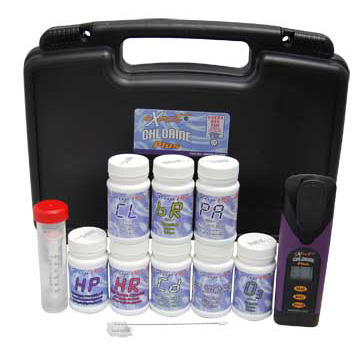Every once in a while we get a question about a topic related to water quality, but not quite a water quality question… so today’s question came to us from ‘Michael’ who asked,
I need to purchase a quick test means to locate water leaks in supply pipes to my residential water service meter. The county water uses a small tear able foil packet of chemicals that turns red when mixed with chlorinated water. My home has very low water pressure and volume, we are serviced by an extremely old and much damaged 2″ pvc line serviced by the Logan County PSD, Logan WV. The PSD does not have the time or personnel to investigate all of the water puddles located in the community where I live. I would like to be able to quickly and safely test any ground water in the hope of finding where the line rupture is.
Thank you, Michael, for this inquiry. From the sounds of things your local water department uses DPD powder pillows or tablets to investigate the nature of puddles suspected to have formed as a result of leaks in municipal water lines. The chemical DPD turns various shades of pink through dark red in the presence of oxidizers such as chlorine, bromine, ozone, etc.
Where can the average citizen get DPD?
Chemical supply houses often carry DPD powder and/or tablets in bulk and many swimming pool stores tend to carry DPD powder pillows and tablets intended to work with swimming pool test kits.
For what you want to do, though, we suggest you look more closely at DPD powder. Specifically we think you should focus your acquisition efforts on DPD-4, a compound which will detect both free chlorine and combined chlorine in a water sample. This matters because once water treated with free chlorine exits a controlled environment (i.e. leaves the pipe through a crack, fissure, etc.) the free chlorine will immediately begin acting on any and everything in its environment… and that will result in only combined chlorine possibly reaching the surface and creating a pool of water.
Problems with testing puddles for chlorine?
While not totally impossible that a pool of chlorinated water could potentially wind up on the surface over or near a leak from a chlorinated municipal water line, we believe that only a good sized leak could produce water in the volume required to get water containing highly reactive chlorine molecules through contaminant filled soil and up to the surface — with readable/detectable chlorine residual levels high enough to detect visually (or with a portable meter) using DPD.
But, since your local water department does it, either your water line infrastructure routinely has large leaks or its water lines lie very close to the surface. Either way, a swimming pool supply company called In the Swim carries DPD-1 tablets and DPD-3 tablets.
Crushing (carefully) and then mixing them (carefully) in equal parts should enable you to create your own version of DPD-4, but to play it safe we suggest using the appropriate amount of DPD-1 in a 10 mL sample of water and then using the DPD-3 in that same sample — per the ‘accepted’ procedures for free and total chlorine concentration determination.










